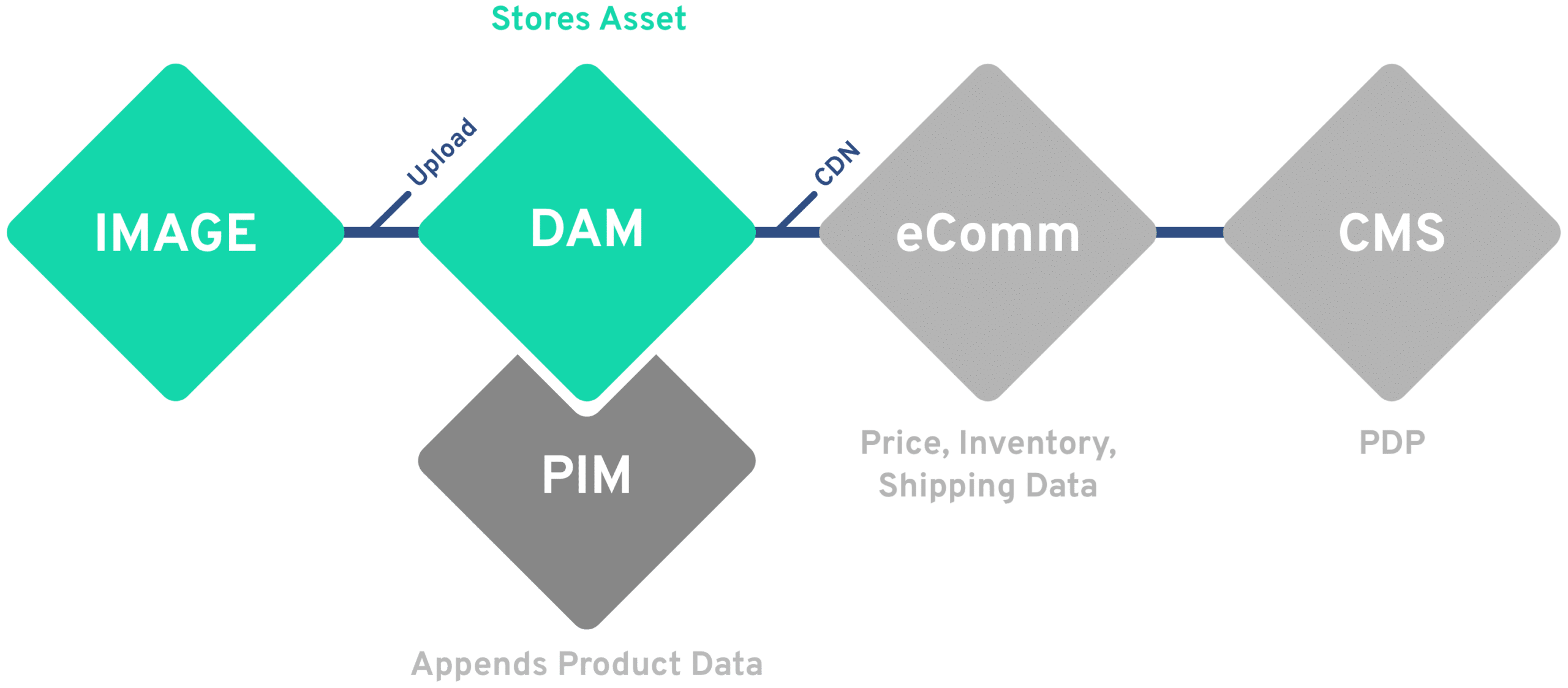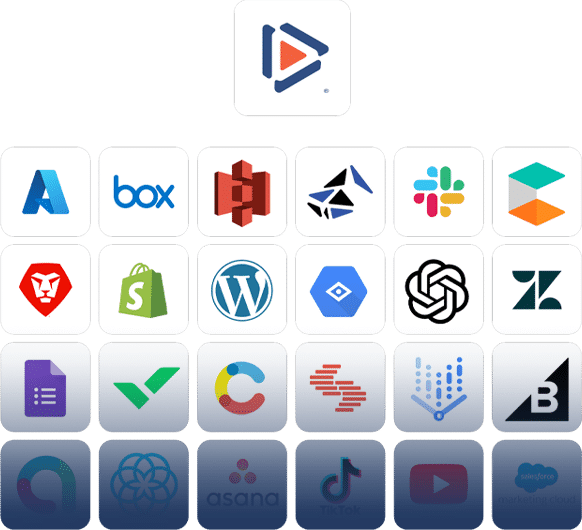
If you’re a company that makes or sells any kind of product – and yes, we include things like movies and other entertainment in that bucket – then no doubt you have a ton of data and important information about that product that needs to be managed.
And, it’s likely you achieve that with a product information management (PIM) system.
Your PIM platform should be a system of record for all your product information – things like descriptions of the product, specifications, unique ID numbers like SKUs, and hundreds or sometimes thousands of other product attributes. But what a PIM doesn’t do is host any sort of visual or other digital asset that’s been created for that product.
You do that in a digital asset management (DAM) platform.
Some platforms will let you push assets from the DAM into the PIM, but you can unlock so much more value with a bi-directional integration between the two systems.
Before we dive in further on why this is so valuable, let’s start by just explaining what a bi-directional integration actually means.
PIM & DAM Integrations
The value of linking these two technologies is the ability to leverage their full functionalities while seamlessly sharing data and assets back and forth between them. A bi-directional integration between DAM and PIM will:
- Allow the PIM to be the system of record for all product data
- Give the DAM read-only access to product data from the PIM
- Allow the DAM to automatically pull in product data and attach it to assets
- Enable the DAM to push assets and asset data back into the PIM
- Ensure teams have real-time access to accurate, approved product data and assets—protecting brand integrity
At its core, the PIM and DAM integration is about enriching both systems with data from the other to enable greater efficiencies in terms of finding, managing, and publishing product data and assets.
With that in mind, here are five reasons this integration should excite you.

1. Improved Content Discoverability in the DAM
In digital asset management, we’re always thinking about ways to make it easier for users to find the content they need. That takes the shape of new metadata structures, AI-tagging, keyword strategies, and so on.
But for the most part, these metadata fields in DAMs describe the asset and its subject, and not the product specifically.
Instead, shouldn’t you be able to just search for a SKU number in the DAM and pull up all assets related to that product? Well, yes! From there, you can use either more product information like specifications or dimensions, or use the DAM’s metadata tags and keywords, like colors or subjects, to filter and find the right content.
The ability to quickly and easily find content in the DAM using product information is an incredible time-saver for users, and has other productivity and ROI benefits, including…
2. Enabling Content Reuse
One of the added benefits of making it easier to find content in the DAM is also making it easier to find content you want to reuse. Brands spend millions creating content to help them sell their products. But sometimes, if content isn’t tagged the right way or is missing certain keywords, it can get lost in the DAM. That means companies are spending even more money to recreate assets they already have in the system (this actually happens way more than most companies like to admit).
Automatically pulling product data, and applying it to assets in the DAM, helps ensure content doesn’t get lost. It makes it easy for users to find assets they can reuse, thus increasing the value of each one of those assets while reducing content spending overall.
Choose a DAM vendor that helps you integrate your tech stack.
3. Streamline Content Distribution
Listing a product on an ecommerce website isn’t always as easy as it should be. You’re often copying data from your PIM into a CMS or eComm platform, manually downloading an asset from the DAM and re-uploading it to the site, and then configuring a product detail page to make the listing just right.
Well, scratch that. When you integrate your PIM with your DAM, you allow the product information to automatically be attached to your content. And, depending on the DAM you have, you can then package the asset and product data together, and publish it directly to your eComm platform or website directly.
You might say that the productivity gains for just one asset isn’t worth the effort of integrating the systems, but for large product and retail companies that manage this at large scale, the benefits compound into a huge time and money saver.
4. Data Consistency
Enterprise brands have incredible amounts of data to manage, and keeping it all organized is essential to doing so successfully. Each new system that operates in a silo increases the risk that data standards aren’t followed – things like taxonomy, tags, and other sorts of metadata. At the scale with which these companies are creating content, it can quickly devolve into data chaos.
Bringing the DAM and PIM together is just another way to ensure the way you represent a product in your system of record – the PIM – is consistent across other systems like your DAM. It’s what allows data to be shared between technologies, and enables in-depth reporting and transparency that would otherwise be impossible to manage in any sort of automated way.
Brands spend significant time and resources undertaking data cleanup projects and realigning their systems. Integrating the DAM and PIM is one preventative measure that pays off in terms of processes and data transparency.
5. PIM Alternative
As members of the MACH Alliance, Tenovos is committed to being integration-first. We believe organizations are best served purchasing best-in-class technologies, and not tools that try to do everything.
That being said, there are cases where brands may not be ready to invest in two technologies. For that reason, a DAM with a built-in bi-directional PIM integration framework can also be configured to manage product information and act as a functional – though ultimately limited – solution until a true PIM can be purchased.
In doing so, you can still benefit from combining the DAM’s assets with product information, albeit when you’re able to purchase a PIM and connect the systems instead, we feel that’s the best approach to maximize the true capabilities and values of both systems.
Integrating Your DAM with Your PIM
Modern DAM platforms are designed to connect to other enterprise technologies in order to facilitate this two-way communication of data. Not all DAMs are created equal, and so it’s important to investigate with your vendor, or potential vendor if you’re in the evaluation phase of a new DAM purchase, their ability to connect to your PIM and enable the aforementioned functionalities and benefits of the integration.
To learn more about how to choose a vendor capable of helping you with integrations like these, click here to read our vendor evaluation guide.
Connect Your DAM & PIM – No Coding Required
Break down silos—automatically sync SKUs, attributes, and metadata from PIM to DAM with Tenovos Connect—no developers required.

